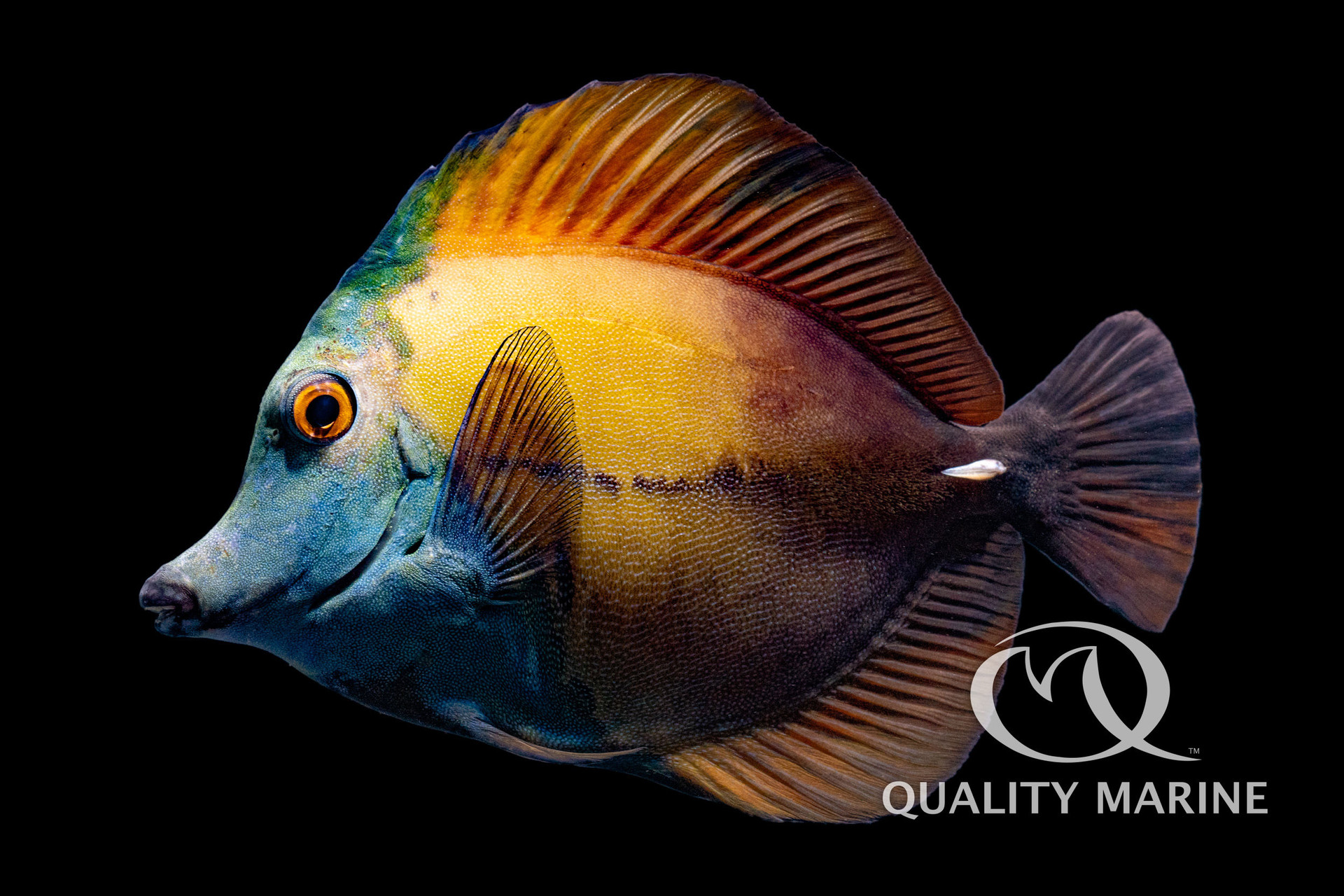One Fish, Two Fish, Red Fish, Blue Face Koi

Koi Tangs, while expensive, are one of the best “showpiece” fish for the reef aquarium. After all, they offer all the benefits of the wildly under-appreciated Scopas Tang, with the kind of unparalleled rarity usually only seen in fish that are very delicate, that cost 4 times as much, or frequently, both.
Scopas Tangs, and therefore Koi Tangs, are likely the best choice for keeping a tang in the home aquarium. They are very hardy and take prepared foods well; we suggest feeding them a mix of meaty foods and pellets along with their regular marine algae based foods like Nutramar's Ogo and Nori. They are model citizens to most fish that come into the aquarium, though they do tend to be a bit pugnacious with other tangs. This being said, they have been kept as one of multiple tangs in many reef aquariums around the world, so this is definitely possible with some forethought about how to do it wisely. They have a listed maximum size of 12 inches, but are unlikely to attain this size, even in the wild, growing very slowly after seemingly racing up to about 5 or 6 inches. Still, a sizable aquarium will be needed for this fish to be healthy throughout its life; a 6 foot long 125 gallon should be seen as the minimum.
Pure black, yellow and white, yellow and black, plain yellow versions of Scopas tangs have been found throughout their native (and very wide) tropical Pacific range, albeit very infrequently. These Koi Tangs are found in a tighter area and are obviously still very rare. So, why do these “Koi” Scopas look so crazy? Well, there are several theories being floated at the moment from fungal infections hypothesized by Debelius & Kuiter in 2001 to a fish version of vitligo (though this usually just causes a lightening of skin in blotchy areas, and wouldn't explain the crazy multicolored patterns of Koi Tangs). Another theory is that the fish have a genetic condition called “oligomelany” where fish (and reptiles) can produce color, but it gets unevenly distributed. This explanation is better, though fails to explain the multiple colors that express on these tangs in addition to the base colors. The horse world has several different names for multicolored animals like “piebald,” “skewbald,” “pinto,” and more, though all these colorations are permanent, whereas the Koi Tangs sometimes change color!
In the end, these are all one-of-a-kind fish. Even Koi Tangs don't look like other Koi Tangs. Every one is a unique masterpiece that may change into crazier colors still, or may slow segue back into normal coloration, or may be colorfast for its whole life. There is no way to tell. Regardless, there is no aquarium fish on the planet with this combination of bespoke looks and captive hardiness. Ask your LFS about getting one from Quality Marine today.